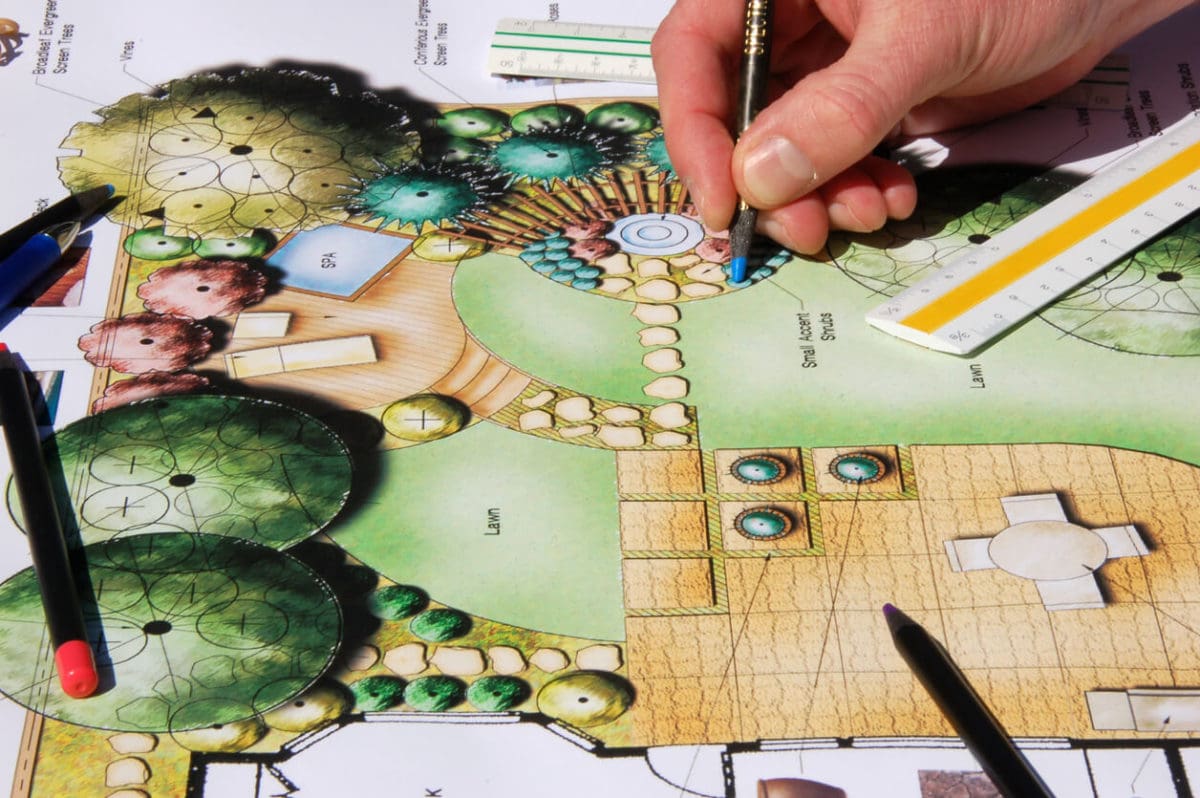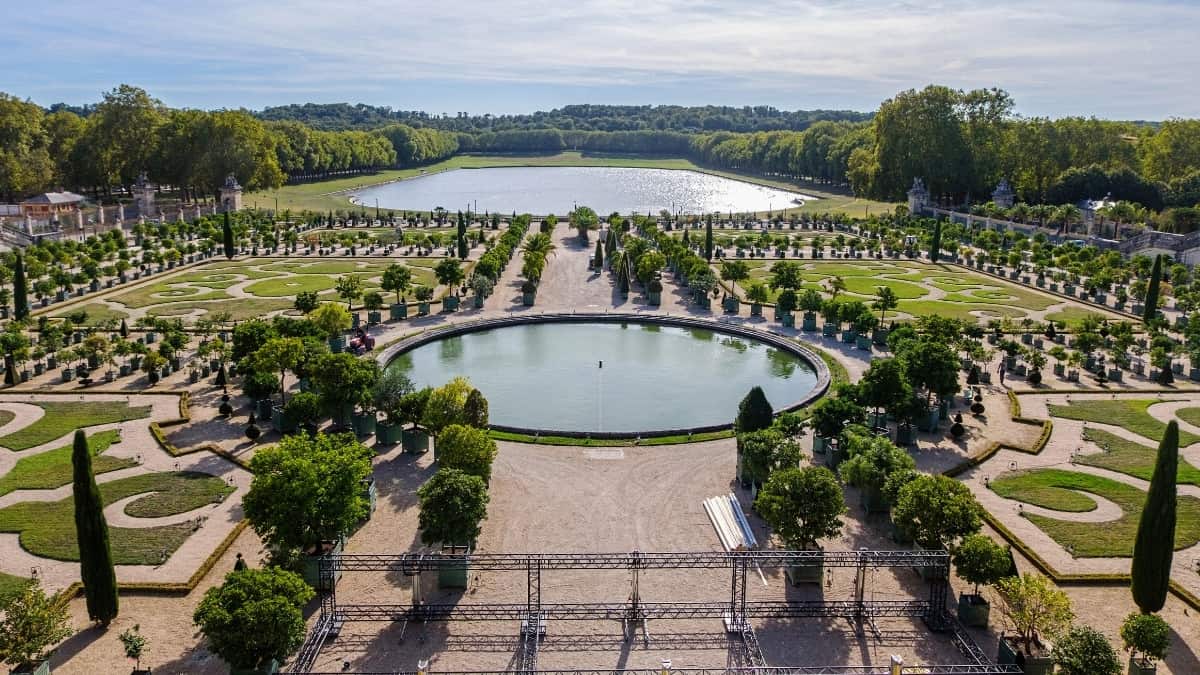Home>diy>Planning & Engineering>Who Should Consider Becoming A Landscape Architect?


Planning & Engineering
Who Should Consider Becoming A Landscape Architect?
Modified: February 25, 2024
If you have a passion for both planning and engineering, becoming a landscape architect might be the perfect career choice for you! Discover who should consider this rewarding profession.
(Many of the links in this article redirect to a specific reviewed product. Your purchase of these products through affiliate links helps to generate commission for Storables.com, at no extra cost. Learn more)
Introduction
Becoming a landscape architect is a rewarding career path for those who have a passion for creating beautiful and functional outdoor spaces. Whether it’s designing parks, gardens, or urban landscapes, landscape architects play a crucial role in shaping the world around us.
But who exactly should consider becoming a landscape architect? In this article, we will explore the responsibilities, skills, and qualifications required to thrive in this field. We will also discuss the educational requirements and training needed, as well as the job opportunities and career paths available in this exciting profession.
So, if you have a love for nature, a creative mindset, and a desire to make a positive impact on the environment, read on to discover if becoming a landscape architect is the right choice for you.
Key Takeaways:
- Landscape architecture offers a rewarding career for those with a passion for creativity, technical expertise, and environmental stewardship. It provides opportunities to make a positive impact on communities and the natural world.
- Successful landscape architects possess a unique blend of creativity, problem-solving skills, and a deep love for the environment. While the profession comes with challenges, it offers the chance to create impactful outdoor spaces and contribute to the betterment of society.
Read more: How To Become Landscape Architect
What Does a Landscape Architect Do?
Landscape architects are professionals who combine the art and science of designing outdoor spaces. They collaborate with clients, architects, and engineers to create aesthetically pleasing and functional landscapes that meet the needs of the users and the environment.
Their job involves a range of tasks, including conducting site analysis, developing conceptual designs, creating detailed plans and specifications, and overseeing the implementation of landscape projects.
One of the key responsibilities of a landscape architect is to understand the goals and requirements of the client and translate them into a cohesive design. This involves considering factors such as the site’s topography, climate, and natural features, as well as the desired functionality and aesthetics.
To accomplish this, landscape architects often conduct site visits and analyze the existing conditions of the area. They assess the soil quality, drainage patterns, and vegetation, and take into account any environmental factors that may impact the design.
Based on this analysis, landscape architects develop conceptual designs that illustrate their vision for the project. They carefully select and arrange elements such as trees, plants, hardscapes, and water features to create a harmonious and engaging outdoor environment.
In addition to the artistic aspects, landscape architects also need to consider practical elements such as accessibility, safety, and sustainability. They must ensure that the design meets building codes and regulations, as well as addresses issues such as water management, erosion control, and conservation of natural resources.
Once the design is finalized, landscape architects create detailed plans and specifications that serve as a roadmap for contractors and construction teams. They may also be involved in the procurement of materials and the selection of appropriate contractors for the project.
During the implementation phase, landscape architects oversee the construction process, ensuring that the design is executed according to the plans and specifications. They may also provide guidance and make adjustments as needed to ensure the desired outcome is achieved.
Overall, the role of a landscape architect is multifaceted, requiring a combination of artistic creativity, technical knowledge, and project management skills. It is a profession that allows individuals to make a lasting impact on the environment and create spaces that enhance the quality of life for communities and individuals.
Skills and Qualifications Required
Being a landscape architect requires a diverse set of skills and qualifications. Here are some of the key abilities and traits that will help you succeed in this field:
- Creative Design: Landscape architects must have a strong sense of creativity and artistic ability. They need to be able to envision and conceptualize outdoor spaces that are visually appealing and functional.
- Technical Expertise: Along with creativity, landscape architects must possess technical knowledge of various design principles, site analysis techniques, and construction processes. They should be familiar with design software, such as AutoCAD, and have a solid understanding of landscape architecture principles.
- Communication and Collaboration: Landscape architects often work with clients, architects, engineers, and other professionals. Strong communication skills are essential for effectively conveying ideas, understanding client requirements, and collaborating with team members.
- Problem Solving: Landscape architects must be adept at problem-solving, as they regularly encounter challenges such as site constraints, environmental considerations, and budget limitations. The ability to think critically and develop innovative solutions is crucial in this field.
- Environmental Stewardship: A deep understanding and appreciation for the environment is a fundamental quality of a landscape architect. They must consider factors such as sustainability, biodiversity, and conservation in their designs to create landscapes that are both aesthetically pleasing and ecologically responsible.
- Project Management: Landscape architects often oversee the entire lifecycle of a project, from initial design to construction. Strong project management skills, including time management, organization, and budgeting, are necessary to ensure the successful completion of projects.
- Client Relations: Building strong client relationships is essential for landscape architects. They need to understand client needs, manage expectations, and ensure that their designs align with the client’s vision and budget.
In terms of qualifications, a bachelor’s or master’s degree in landscape architecture is typically required to become a licensed landscape architect. These degree programs provide a comprehensive education in design principles, technical knowledge, and site analysis. Additionally, obtaining licensure from the appropriate licensing board is necessary to legally practice as a landscape architect.
Continuing education and staying updated on industry trends and advancements are also important for maintaining and enhancing professional skills. Participating in workshops, attending conferences, and joining industry associations can help landscape architects stay current in their field and expand their knowledge.
Ultimately, a successful landscape architect possesses a combination of artistic flair, technical expertise, excellent communication, problem-solving ability, and a deep appreciation for the environment. By honing these skills and obtaining the necessary qualifications, aspiring landscape architects can embark on a fulfilling and impactful career.
Educational Requirements and Training
The path to becoming a landscape architect typically begins with obtaining the necessary education and training. Here is an overview of the educational requirements and training required to pursue a career in this field.
Educational Requirements:
To become a landscape architect, it is generally recommended to earn a bachelor’s degree in landscape architecture from an accredited university or college. Some institutions also offer a Master of Landscape Architecture (MLA) program for those who wish to further specialize in the field.
During the undergraduate or graduate program, students gain a comprehensive understanding of landscape architecture principles, technical skills, and design theories. The curriculum typically includes courses in subjects such as site planning, plant materials, landscape design, environmental sustainability, construction methods, and computer-aided design (CAD).
It is important to ensure that the program you choose is accredited by the landscape architecture accreditation board. This accreditation ensures that the program meets the required educational standards and prepares students for the professional practice of landscape architecture.
Training and Experience:
In addition to formal education, gaining practical experience through internships or entry-level positions is crucial for aspiring landscape architects. Many universities offer cooperative education programs or require students to complete a certain number of hours of professional experience before graduation.
Internships provide valuable hands-on training and the opportunity to work alongside experienced professionals in the field. This experience allows aspiring landscape architects to apply their classroom knowledge in real-world scenarios, develop practical skills, and build a professional network. It can also provide insights into different areas of landscape architecture, such as residential design, urban planning, or environmental conservation.
After completing their education and gaining practical experience, aspiring landscape architects may be required to pass the Landscape Architect Registration Examination (LARE) to become licensed. The LARE is a multi-part exam that tests candidates’ knowledge and competency in various areas of landscape architecture.
Continuing Education:
Continuing education is essential for landscape architects to stay updated on the latest trends, technologies, and best practices in the field. Many professional associations and organizations offer continuing education programs, workshops, and conferences that provide opportunities for landscape architects to expand their knowledge and skills.
By pursuing the necessary education, gaining practical experience, and continuously investing in professional development, aspiring landscape architects can lay a solid foundation for a successful and fulfilling career in this dynamic field.
Job Opportunities and Career Paths
As a landscape architect, there is a wide range of job opportunities and career paths available. Here are some of the potential avenues you can explore in this field.
Private Practice:
Many landscape architects choose to work in private practice, either as sole practitioners or as part of a design firm. In private practice, landscape architects have the opportunity to work on a variety of projects, ranging from residential gardens to commercial developments. They may collaborate with clients, architects, and contractors to bring their designs to life.
Public Sector:
Another common career path for landscape architects is working in the public sector. They may be employed by government agencies at the local, state, or federal level. In the public sector, landscape architects play a vital role in designing and maintaining public parks, green spaces, streetscapes, and other outdoor amenities. They work on projects that contribute to the overall well-being and aesthetics of communities.
Environment and Conservation Agencies:
Landscape architects can also find opportunities in environment and conservation agencies, such as national or state parks, wildlife refuges, or environmental organizations. In these roles, they focus on creating and managing landscapes that promote biodiversity, protect natural resources, and enhance the visitor experience. They may also be involved in ecological restoration projects and land-use planning.
Urban Planning:
Landscape architects with a strong interest in urban design and planning may choose to specialize in this area. They work closely with urban planners to develop plans and policies that shape the layout and design of cities and urban spaces. They play a critical role in designing public plazas, streetscapes, and urban parks, with a focus on creating more livable and sustainable urban environments.
Academia and Research:
For those who have a passion for teaching and research, a career in academia or research is an option. Landscape architects can pursue opportunities in universities or research institutions, where they can educate future generations of landscape architects, conduct research on innovative design strategies, and contribute to the advancement of the profession.
Specialization:
Within the field of landscape architecture, there are various areas of specialization that professionals can pursue. Some may choose to focus on residential design, creating outdoor spaces for private homeowners. Others may specialize in healthcare design, designing therapeutic gardens and healing environments. Some landscape architects may also specialize in ecological restoration, historic preservation, or sustainable design.
With the increasing recognition of the importance of sustainable and environmentally-friendly design, there are growing opportunities in green infrastructure and sustainable landscape design. Landscape architects can work on projects that integrate elements such as green roofs, rain gardens, and permeable pavements, improving the environmental performance of landscapes.
Ultimately, the career path of a landscape architect is flexible and diverse. It offers opportunities for creative expression, community impact, and professional growth. By leveraging skills, knowledge, and passion, landscape architects can carve out a fulfilling and rewarding career in shaping the world around us.
Consider becoming a landscape architect if you have a passion for design, environmental sustainability, and creating outdoor spaces that enhance communities and the natural environment.
Read more: How To Become A Landscape Architect In NYC
Industries and Sectors that Employ Landscape Architects
Landscape architects are in demand across various industries and sectors. Their expertise is sought after by organizations and individuals who recognize the value of well-designed outdoor spaces. Here are some of the industries and sectors that employ landscape architects:
1. Architecture and Design Firms:
Landscape architects often collaborate with architects and designers in creating integrated designs for residential, commercial, and institutional buildings. They work together to ensure that the built environment harmonizes with the surrounding landscape, creating cohesive and aesthetically pleasing spaces.
2. Real Estate Development:
Landscape architects play a critical role in the planning and development of real estate projects. They contribute to the design of outdoor amenities and landscaping features that enhance the appeal and functionality of residential, commercial, and mixed-use developments. Their designs can greatly impact property value and attract potential buyers or tenants.
3. Parks and Recreation Departments:
Public parks, green spaces, and recreational facilities are essential for community well-being. Landscape architects are employed by parks and recreation departments to design, plan, and maintain these spaces. They ensure that parks and recreational areas are aesthetically pleasing, accessible, and offer a range of amenities for people of all ages to enjoy.
4. City Planning and Urban Design:
Landscape architects work closely with urban planners and city officials to shape the design and layout of cities and urban areas. They contribute to the creation of public plazas, streetscapes, urban parks, and greenways. Their expertise in sustainable design and open space planning helps in developing vibrant and livable urban environments.
5. Environmental and Conservation Organizations:
Many landscape architects find employment in environmental and conservation organizations. They support conservation initiatives, ecological restoration projects, and the preservation of natural resources. Landscape architects in this sector work on projects that promote environmental sustainability, habitat conservation, and the preservation of biodiversity.
6. Government Agencies:
Government agencies at various levels employ landscape architects to manage public lands, design infrastructure projects, and develop policies related to outdoor spaces. These agencies include departments of transportation, housing and urban development, and natural resources. Landscape architects can contribute to creating sustainable transportation corridors, developing affordable housing landscapes, and preserving natural landscapes.
7. Landscape Construction and Contracting:
Landscape architects can also find employment with landscape construction and contracting firms. They contribute their design expertise to ensure that construction projects align with the intended design vision. Landscape architects working in this sector collaborate with contractors to oversee the implementation of projects and ensure high-quality craftsmanship.
These are just a few examples of the industries and sectors that employ landscape architects. With their versatile skill set, landscape architects have the opportunity to work in various fields, bringing their creative design solutions and expertise to projects that enhance the built and natural environment.
Pros and Cons of Becoming a Landscape Architect
Becoming a landscape architect can be a fulfilling and rewarding career choice, but like any profession, it has its pros and cons. Here are some of the advantages and disadvantages to consider when contemplating a career as a landscape architect:
Pros:
- Creative Expression: Landscape architecture allows for artistic expression and creativity. As a landscape architect, you have the opportunity to design beautiful outdoor spaces that positively impact people’s lives and the environment.
- Varied Projects: The field of landscape architecture offers a wide range of projects and opportunities. You can work on diverse projects, from residential gardens to parks, urban plazas, and commercial developments, ensuring that each project is unique and fulfilling.
- Positive Impact: Landscape architects have the ability to make a positive impact on the environment and communities. They can design sustainable landscapes that promote biodiversity, improve urban environments, and enhance quality of life.
- Continuous Learning: Landscape architecture is a dynamic field that constantly evolves with new design trends, technologies, and sustainable practices. As a landscape architect, you have the opportunity for continuous learning and professional growth.
- Collaboration: Landscape architects often work collaboratively with various professionals, including architects, engineers, and environmental scientists. This collaborative work environment provides opportunities for interdisciplinary learning and enhances the quality of design outcomes.
Cons:
- Long Hours and Deadlines: The profession of landscape architecture often involves long work hours to meet project deadlines. Designing and planning outdoor spaces requires careful attention to detail, which can be time-consuming.
- Site Challenges: Landscape architects frequently encounter various site challenges, such as difficult terrain, environmental limitations, or budget constraints. Overcoming these challenges requires problem-solving skills and adaptability.
- Weather Dependence: The nature of landscape architecture exposes professionals to outdoor work, which can be impacted by weather conditions. Working in extreme weather or dealing with seasonal limitations may present challenges to project implementation.
- Client Expectations: Landscape architects often work closely with clients, and meeting their expectations while staying within budget can be challenging. Balancing design creativity with practical considerations and managing client expectations requires effective communication and negotiation skills.
- Continuing Education: Landscape architecture is a field that requires continuous learning and staying up-to-date with industry trends, design software, and sustainability practices. Commitment to lifelong learning is necessary to thrive in this profession.
When considering a career as a landscape architect, it is important to weigh these pros and cons against your skills, interests, and personal goals. While the profession offers many rewards, it also entails certain challenges. By carefully considering these factors, you can make an informed decision about whether becoming a landscape architect aligns with your aspirations and lifestyle.
Personal Traits and Characteristics of Successful Landscape Architects
Successful landscape architects possess a combination of personal traits and characteristics that contribute to their effectiveness in the field. While technical skills and formal education are crucial, these personal qualities play a significant role in the success of a landscape architect. Here are some key traits and characteristics to consider:
- Creativity: Landscape architects need to have a strong sense of creativity and imaginative thinking. They must be able to envision unique design solutions and think outside the box to bring their ideas to life.
- Passion for the Environment: Successful landscape architects have a deep love for the environment and a strong understanding of ecological systems. They strive to create landscapes that are sustainable, environmentally friendly, and in harmony with nature.
- Attention to Detail: Landscape architects must pay meticulous attention to detail to ensure precision in their designs and specifications. They must have an eye for accuracy and be able to consider all factors and requirements of a project.
- Strong Communication Skills: Effective communication is essential for landscape architects as they collaborate with clients, contractors, and other professionals. They must be able to clearly convey their ideas, listen actively, and negotiate with stakeholders.
- Problem Solving: Successful landscape architects are skilled problem solvers. They are able to assess complex challenges, analyze various options, and develop innovative solutions to meet the project’s goals and objectives.
- Flexibility: The ability to adapt to changing circumstances and be open to new ideas is important in landscape architecture. Successful landscape architects can adjust their designs and plans as needed, considering factors such as budget constraints, site conditions, and client preferences.
- Collaboration: Landscape architects often work as part of a team, requiring strong collaboration skills. The ability to work well with others, respect different perspectives, and contribute effectively to a collective vision is essential.
- Time Management: Landscape architects juggle multiple projects and deadlines, making time management skills crucial. Successful landscape architects are able to prioritize tasks, manage their workload effectively, and meet project deadlines.
- Continuous Learning: Keeping up with industry trends and advancements is vital in landscape architecture. Successful landscape architects have a thirst for knowledge and a commitment to continuous learning. They stay updated on new techniques, technologies, and sustainable practices.
- Resilience: Landscape architecture can be demanding, with challenges and setbacks inherent in the field. Successful landscape architects possess resilience, perseverance, and the ability to bounce back from setbacks and continue pursuing their goals.
These personal traits and characteristics contribute to the success of landscape architects, allowing them to tackle projects with creativity, professionalism, and a deep understanding of the natural environment. While some of these traits may come naturally, others can be developed through experience, education, and a genuine passion for the field.
By cultivating and honing these personal qualities, aspiring landscape architects can enhance their effectiveness in the profession, contribute to meaningful projects, and create impactful outdoor spaces for people to enjoy.
Conclusion
Becoming a landscape architect is an exciting and fulfilling career choice for those who possess a passion for combining art, design, and the environment. This profession offers the opportunity to create beautiful and functional outdoor spaces that enhance the well-being of individuals and communities.
Throughout this article, we have explored the responsibilities, skills, and qualifications required to succeed as a landscape architect. We have discussed the educational requirements and training needed, as well as the diverse job opportunities and career paths available in this field.
Landscape architecture is a multi-faceted profession that requires a unique blend of creativity, technical expertise, problem-solving skills, and a deep appreciation for the environment. By cultivating these skills and qualifications, aspiring landscape architects can embark on a rewarding career that allows them to make a positive impact on the world.
However, it is important to acknowledge that this profession also comes with its own challenges. Landscape architects must navigate long hours, tight deadlines, and client expectations while working with site constraints and weather dependencies.
Ultimately, the decision to become a landscape architect should be based on a thorough understanding of the pros and cons of the profession, as well as a personal assessment of skills, interests, and goals. By considering these factors, individuals can determine if this profession aligns with their aspirations and lifestyle.
In conclusion, landscape architecture offers a unique opportunity to blend art, science, and environmental stewardship. It allows professionals to leave a lasting impact on the world by creating inspiring and sustainable outdoor spaces. With the right education, skills, and personal attributes, aspiring landscape architects can embark on a fulfilling journey in a profession that continuously challenges, inspires, and contributes to the betterment of our surroundings.
Frequently Asked Questions about Who Should Consider Becoming A Landscape Architect?
Was this page helpful?
At Storables.com, we guarantee accurate and reliable information. Our content, validated by Expert Board Contributors, is crafted following stringent Editorial Policies. We're committed to providing you with well-researched, expert-backed insights for all your informational needs.















0 thoughts on “Who Should Consider Becoming A Landscape Architect?”